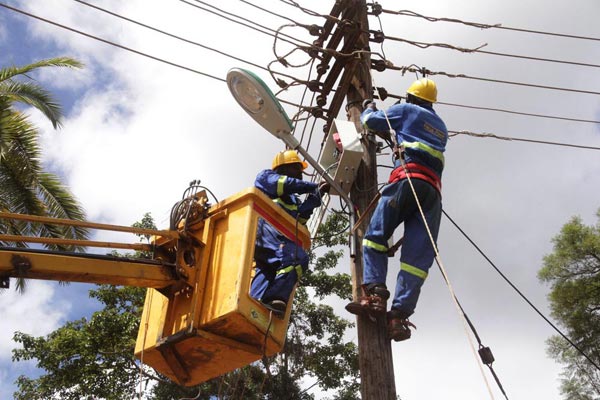Overview of Electricity in Sri Lanka

Strong 8k brings an ultra-HD IPTV experience to your living room and your pocket.
Sri Lanka, a vibrant island nation in South Asia, has seen remarkable advancements in its electricity sector over the past decades. From a largely manual grid system to a modernized infrastructure, the energy sector has become a cornerstone of the country's development. In this article, we explore the current state of Sri Lanka electricity, the pivotal role of Ceylon Electricity Board (CEB), and the significant contributions of LTL Transformers to powering the nation.
Overview of Electricity in Sri Lanka
Electricity in Sri Lanka has undergone a transformational journey. As of recent years, the country boasts an electrification rate exceeding 99%, ensuring that even the remotest areas have access to power. This achievement is credited to the focused efforts of the government and private stakeholders to expand infrastructure and invest in renewable energy sources.
The primary source of electricity in Sri Lanka is a mix of hydropower, thermal power, and renewable energy. Hydropower, derived from the country’s abundant water resources, accounts for a substantial share of the total electricity generation. Thermal power, using imported oil and coal, complements hydropower during dry spells. Recently, renewable energy sources like wind and solar have gained traction, helping Sri Lanka move toward a greener energy future.
The Role of Ceylon Electricity Board (CEB)
The Ceylon Electricity Board (CEB) is the primary entity responsible for electricity generation, transmission, and distribution in Sri Lanka. Established in 1969, the CEB has been instrumental in creating a reliable power grid and meeting the growing energy demands of the nation.
Key responsibilities of the CEB include:
Electricity Generation: Operating major power plants, including hydropower stations like Victoria and Randenigala and thermal power stations like Norochcholai.
Transmission: Ensuring high-voltage power reaches substations across the country efficiently.
Distribution: Managing the delivery of electricity to end-users, from industrial complexes to individual households.
Promoting Renewable Energy: Initiating projects to harness solar, wind, and biomass energy to reduce dependency on fossil fuels.
The CEB’s initiatives to improve energy efficiency and reduce transmission losses have been vital in maintaining an uninterrupted power supply for millions of Sri Lankans.
Challenges in the Electricity Sector
Despite the progress, Sri Lanka’s electricity sector faces significant challenges:
Rising Demand: As the population and industries grow, the demand for electricity continues to surge, requiring substantial investments in capacity building.
Dependency on Imports: A significant portion of Sri Lanka’s thermal power relies on imported oil and coal, leaving the country vulnerable to global price fluctuations.
Climate Change: Irregular rainfall patterns affect hydropower generation, necessitating alternative energy solutions.
Infrastructure Maintenance: Aging transmission and distribution networks require upgrades to minimize power losses and outages.
LTL Transformers: A Key Player in Powering Sri Lanka
Amid these challenges, LTL Transformers, a leading name in the energy sector, has emerged as a critical contributor to the development of Sri Lanka’s electricity infrastructure. Founded in 1982 as a subsidiary of the CEB, LTL Transformers has grown into a global powerhouse specializing in the design, manufacture, and supply of transformers and related equipment.
Core Offerings of LTL Transformers
LTL Transformers provides a comprehensive range of products and services that play a vital role in electricity transmission and distribution. These include:
Power Transformers: Essential for stepping up or stepping down voltage levels to ensure efficient electricity transmission.
Distribution Transformers: Used to deliver electricity from substations to end-users, ensuring reliability and safety.
Electrical Panels: Advanced control panels designed to manage electrical systems effectively.
Maintenance Services: Comprehensive support for transformer repairs and maintenance, extending the lifespan of equipment.
Innovations by LTL Transformers
LTL Transformers has consistently invested in research and development to improve product efficiency and environmental sustainability. Their state-of-the-art manufacturing facilities are equipped with the latest technology, ensuring high-quality output that meets international standards.
Some of their recent innovations include:
Energy-Efficient Transformers: Designed to reduce power losses and operational costs.
Eco-Friendly Designs: Incorporating biodegradable materials to minimize environmental impact.
Smart Transformers: Featuring advanced monitoring systems for real-time performance tracking.
These innovations have positioned LTL Transformers as a trusted partner for both domestic and international clients.
The Future of Electricity in Sri Lanka
Sri Lanka’s electricity sector is poised for a bright future, with ambitious goals to achieve carbon neutrality by 2050. Key steps toward this vision include:
Expanding Renewable Energy: Increasing the share of solar, wind, and biomass energy in the national grid.
Modernizing Infrastructure: Upgrading transmission and distribution networks to reduce losses and improve efficiency.
Encouraging Private Investment: Attracting local and foreign investors to fund large-scale energy projects.
Enhancing Energy Storage: Developing battery storage systems to ensure a steady power supply from intermittent renewable sources.
LTL Transformers is expected to play a pivotal role in this transition. Their expertise in designing efficient and reliable transformers will be crucial in supporting renewable energy integration and grid modernization efforts.
Note: IndiBlogHub features both user-submitted and editorial content. We do not verify third-party contributions. Read our Disclaimer and Privacy Policyfor details.



